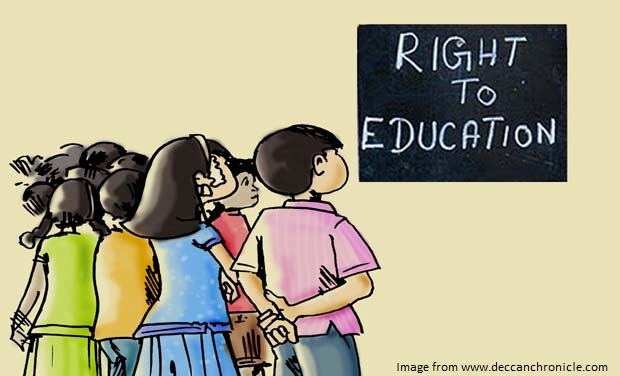Education can become a choice again- An Informed Choice

Pradyumna Narasimha is currently studying in Tamil Nadu National Law School pursuing his Third Year B.Com LL.B
Education can become a choice again- An Informed Choice
The Kothari Commission is an ad hoc commission set up by the Government to examine all aspects relating to Indian education, also to create a general pattern of education and to suggest guidelines and policies for development of education from the primary level to the higher education platform in India. The commission came up with its report in 1966 and recommended sweeping changes with regard to regulation of education in India.
One of the most important recommendations of the commission was to set up a Common School System (CSS). The report said and, I quote, “to bring the social classes and groups together and thus promote the emergence of an egalitarian and integrated society”. It also said that this had to be done because “education in India itself is tending to increase social segregation and inequalities and blatantly perpetuates entrenched class distinctions. The CSS was adopted by the 1968 and the 1986 national policies on education- to bring about an equal society.
Education in India
The Right to Education (RTE) Act was enacted in 2009 which set up a sort of framework for regulating education and it described the importance of free and compulsory education for children between the ages 6 and 14. This was previously a Directive Principle of State Policy (DPSP) but vide the 86th Amendment Act became a fundamental right under Art.21A. It is too early to pass any judgement on the effectiveness of the legislation to the Indian paradigm, but a look at the initial trends wouldn’t go amiss.
According to the 2011 Census, the average literacy rates of people above the age of 15 among Scheduled Castes (SCs) and Scheduled Tribes (STs) are about 9 per cent and this is about 17.4 per cent less than the national average. The female literacy rate is 19.5 per cent less than that of males. This difference increases to 23 per cent and 23.5 per cent among the SCs and STs, respectively, indicating the double discrimination faced by Dalit and Adivasi women who have very little access to primary education. The dropout rates in primary school among SCs and STs are significantly higher than the national average and more girls discontinue schooling than boys. Ten years after the census report, The National University of Educational Planning and Administration’s report of 2011-2012 shows that only about 16% of students belonging to SCs and STs enroll and have access to private schools. The report also showed that the average Indian household spends five times more money on each child every year if he/she enrolls in a private school over a government school. So, it can be safely concluded that private schools are more accessible to higher income groups and coupled with the existing narrative that private schools provide the best quality of education makes for serious reading. Of course, there is a wide variation across States and the gap is wider in rural areas as compared to urban areas and these inequalities suggest a change in approach when looking at education in India.
THE SCHOOL CHOICE THEORY
One of the longstanding and major problems with primary education in India is the exclusionary nature of government schools and the private school bias towards the rich in society. The RTE which guarantees free and compulsory education until the age of 14 has until now not really resulted in a raise in the standards and quality of education. What the Indian education sector really needs is a mechanism to form a more egalitarian and a standardized structure of regulation in the imparting of education.
This can be achieved by application of Milton Friedman- Nobel winning economist’s, idea of a voucher system which will ensure that all groups get access to an education of their desire thus turning education into a choice rather than an imposition. Milton Friedman calls this the ‘School Choice Theory’. The school choice theory was based on Milton Friedman’s idea of the government separating the administration and finance of schools in the country. The School Choice Theory in essence is a system where the government gives out vouchers to all parents in the country which they can redeem for a school of their choice. Basically, the parents who wish to admit their child in a particular school, whether private or public, will do the relevant research about their preferred school, then get in touch with the school and visit it if needed to enquire about the tuition fee and then redeem the voucher given by the government to get their child into their preferred school. The voucher can be redeemed for particular courses or subjects in specific schools and the parents could also contribute to the voucher amount to help their children get access to specialized courses or elite private schools too. The government could finance the vouchers not by imposing an education tax or anything of that sort but by setting aside a small portion of income or sales tax already being levied.
The advantages of such a system in the Indian paradigm are multifold. One, access to education for women, dalits, adivasis and any other disadvantaged community will improve and the barriers that existed will be eliminated. Second, the regulation of both the private and public schools will come under the purview of the government as the government sets the curriculum, qualifications of the teachers and infrastructural norms. Third, this scheme will assist in deepening of the democratic conscience in the country and celebrate plurality of communities. And lastly, since this measure creates a free and fair marketplace for all kinds of schools monopoly in primary education will be eliminated and competition will be rampant thus improving the quality of education. Milton Friedman in his own words best explains the ‘school choice’ system.
He says, “Our goal is to have a system in which every family in the U.S. will be able to choose for itself the school to which its children go. We are far from that ultimate result. If we had that – a system of free choice – we would also have a system of competition, innovation, which would change the character of education.”
CONCLUSION
The school choice theory works extremely well when a viable and sustainable market of free choice exists with perfect competition for goods and services. Though such a system will take a long time to be put in place especially in India, there exist other challenges to implement the school choice system. An important drawback to this system is that ‘school choice’ is not made available to the customer of the service (the child) but to the parents which substitutes one kind of paternalism to another. Also, it becomes problematic if the child in future decides to take up a course completely contrary to the courses/subjects taken at the primary level which could result in problems at the higher education level.
Secondly and more importantly, the government does not regulate the finer points with relation to the syllabus or cannot introduce standardized procedural measures to regulate the education in the system. So, the government cannot reform the gender prejudices in the existing syllabus and the need to sensitize this issue seems lost leading to entrenched gender stereotyping in the minds of the people in India. This might still create disparities in accessibility to education for women in general and more specifically to dalit or adivasi women who are victims of double discrimination or stereotyping by the majority male.
Though this system has worked pretty well in the United States of America which battles with a different kind of segregation and discrimination, the Indian policy makers and society in general will need a little bit more time in implementing such a system. There first needs to be development in areas like healthcare and subsistence which are important indicators of equality and access to markets. Once the background conditions are equal and spread over all communities’, then well informed decision with relation to education will be made. I think they need to address the challenges and problems of this system and appropriate some of its features to fit the Indian paradigm.


